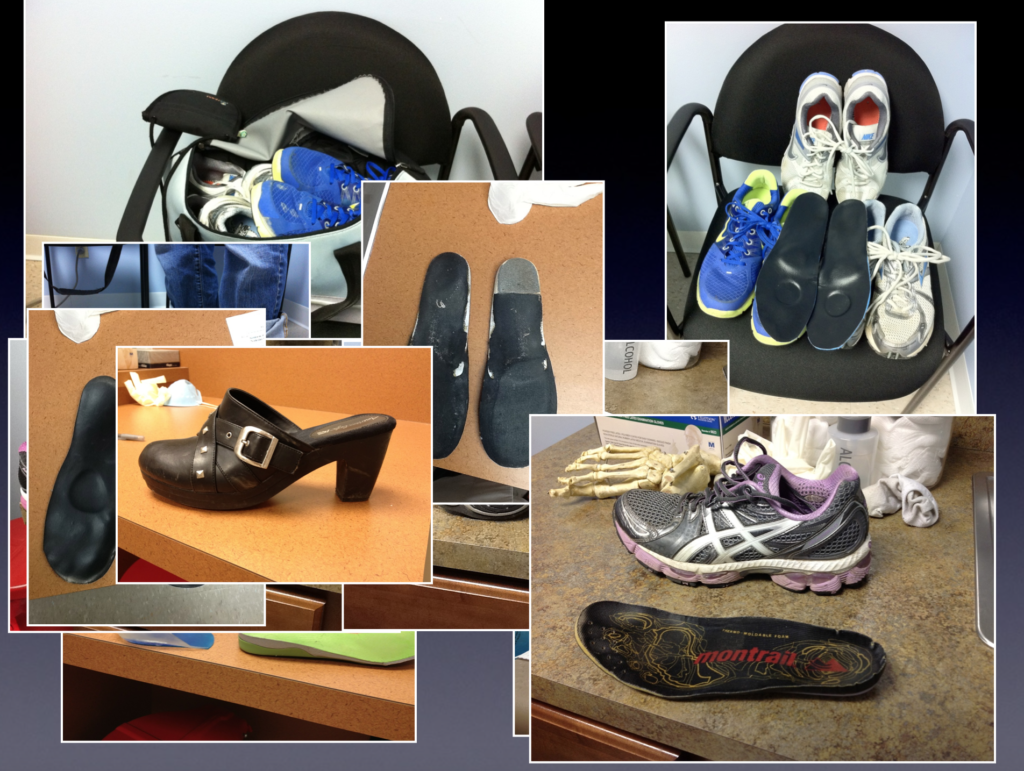Running Shoes. Do they matter?
While attending a GLOBAL Foot and Ankle Surgery conference, I had a discussion with a colleague in regards to running shoes and running surfaces. Knowing my interest and involvement in minimalist shoes, the question was posed to me that “running surfaces back in the prehistoric day were not asphalt or concrete, so how can you advocate running barefoot or without cushion?”
I reminded this individual I’m not referring to thousands of years ago that we ran without shoes or in shoes with very little support. I’m referring to the time period of roughly the past 50 years. Prior to the 1970s, we didn’t have rigid or structured supportive running shoes and we didn’t focus on implementing orthotics to reduce or control motion. The four minute mile was broken, marathons were ran sub 2:10, and athletes were running just as much then as they were now. So we can’t blame the surface. We have always ran on hard surfaces and only recently have we changed the construct of running shoes. From the 1970’s to when Nike invented one of the first running shoes with a cushioned heel, to the 2000’s when shoes have become even thicker, we have seen no reduction in running injuries.
Focusing on form and training patterns will far outweigh any running shoe on the planet in terms of treating a chronic injury. The statement can be made that a running shoe is no different than the shirt on your back when it comes to preventing or resolving injuries.
Recently I had a runner present with questions regarding a nagging intermittent arch pain and shin pain, yet was still able to run. He just so happened to have data from recent runs which were recorded on his Suunto running watch. This revealed that his average cadence (steps per minute) of 150 was well below the advocated cadence of 180 steps per minute. This leads to over-striding and increased pounding to the foot and lower extremity which reduces efficiency and ultimately leads to overuse. We were able to discuss with him a strategy to gradually increase his cadence. His visit shifted from inquiring about orthtoics to a detailed discussion about training patterns.
Countless other patients have presented with bags of running shoes and orthotics to my office only to realize that it’s not the shoe alone that will fix an injury. In fact, an overwhelming majority of running injuries can be resolved without focusing on shoes.
If anyone would like to see more of the slides or information I have presented over the past 5 years on running and running shoes, please comment below and I will post the slides if there is an interest! Thanks for reading my Blog!!
Dr. Nick









Yes I would like to see the slides !
I work in a running shop & most of the staff used to wear 5 fingers running up to 50 miles on the road. But they started getting mid foot injuries .
Now most of them are trying Hokas!
I personally would recommend the five fingers for off road ( natural environment ) running and something like racing flats for the road.
I would like to see the slides.
I distinctly recall the introduction of jogging-running shoes in the 1970s. In the ’60s, when I was run regularly with my friends, we all wore flats which were like tennis or basketball shoes. They had none or minimal drop and no arch support. Shortly after the introduction of jogging shoes, overpronation became the hot topic and prescription orthotics were widely promoted. I recognized that myself and other runners were taking much longer strides and landing harder on our heels. I theorized in a biomechanical forum I was a member of that drop and cushioned heels were delaying dorsflexion and disturbing arch-Achilles tension timing and that this was causing CoM to advance past the heads of the metatarasals early. But my theory was discounted. For the past 4 years I have been wearing zero drop shoes with thin soles. Recently, I have started trail running barefoot. My feet have become noticeably stronger since making these changes.
Yep. I’m willing to see the slides.
I am very interested.
Nick what a great quote! still trying to get the military to understand this so we do not keep injuring soldiers. thanks for all you do to share your knowledge
There is no such thing as the best running shoe in the world, because everyone is different, everyone has different attributes and requirements as a runner.